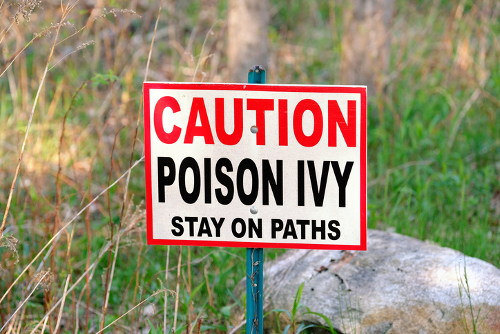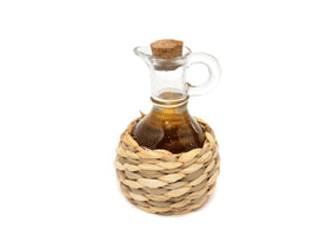 Imagine enjoying spending your spare time hiking through a majestic forest, or even tending to your flower garden. Now imagine you humming to yourself, when suddenly, you have an itchy painful spot on your hands or legs. They are red, thin lines of blisters, known as a poison ivy rash. Now what? Poison ivy rash pictures will let you know how to spot the plant, and we will discuss how to get rid of poison ivy with home treatments.
Imagine enjoying spending your spare time hiking through a majestic forest, or even tending to your flower garden. Now imagine you humming to yourself, when suddenly, you have an itchy painful spot on your hands or legs. They are red, thin lines of blisters, known as a poison ivy rash. Now what? Poison ivy rash pictures will let you know how to spot the plant, and we will discuss how to get rid of poison ivy with home treatments.
The poison ivy plant can be found anywhere in North America, except for Hawaii, Alaska, and of course, the desert.
You can easily come in contact with the presence of its vine or shrub existence in the woods, along the riverbank, a field, and even in your backyard.
It is recognized by its assembly of shiny three-pointed leaves with colors dependent on the season, location, and type of plant. In the summertime, leaves appear green and change to red, orange, or yellow in the fall and spring. Some species of poison ivy offer greenish-yellow flowers or green berries that change to a white color in the fall.

It should be noted that the plant itself does not cause a rash— the oil component does. This is called urushiol, and you can come in contact with it simply by touching the plant or an object it is on, such as a garden tool or a domestic animal.
Poison Ivy Rash Symptoms
Once you have encountered the oily substance of a poison ivy plant, you can expect the symptoms to appear over a 12 to 72-hour period. The poison ivy rash may last up to three weeks, and contrary to public belief, it is not contagious. The discharge that comes from the forming blisters does not contain the urushiol substance that causes an outbreak. These are the signs to look out for.
- Thin, scratch-like lines
- Redness
- Swelling
- Itchiness
- Pain
- Blisters
By having the oily leaves graze your arms or legs, you may see thin red lines, while red patches of the rash can appear after touching the oil on pets or lawn debris. The oil itself can be easily spread to other parts of the body. Symptoms range from mild to severe, and in some rare cases, an anaphylactic reaction can occur. The American Academy of Dermatology claims that nearly 85% of people carry an allergy to the plant oil, with more than 50 million cases per year. One out of every 10 cases are categorized as severe.
Causes of Poison Ivy Rash
The sticky urushiol oil of the plant’s berries, stem, leaves, and roots is responsible for the poison ivy rash. You can easily come into contact with the oil through the following.
1. Direct touch
By touching the plant with your hands, or even having your leg or pantleg graze the plant as you walk by, you may pick up the oil for an allergy reaction.
2. Touching contaminated objects
You can get the oil and spread it on your skin by touching objects that have the oil on them—such as pets, clothing, and even shoes. In some cases, gardening tools, gloves, and other objects have not been cleaned properly and caused a reaction years later.
3. Inhalation
During the burning of a bush containing poison ivy in your backyard, you can irritate your throat lining and lungs by inhaling smoke.
Home Remedies for Poison Ivy Rash Treatments
While there is no cure for poison ivy, it will go away, but not without causing discomfort, pain, and unsightly rashes. You can relieve many of the symptoms with the use of common household ingredients. The most important and the first thing to do is wash skin that has been in contact with the oil. You should also wash any clothing at the time separately from other laundry to prevent the oil from coming into contact with other clothes and bedding.
1. Aloe Vera Gel
The aloe vera plant has antibacterial and anti-inflammatory components to heal the accompanying blisters and ease the pain of a poison ivy rash. The gel is gentle enough to use directly on the rash.
2. Banana
Use the peel of a banana to alleviate the itch of the poison ivy rash. Rub the inside of the peel on the affected area.
 3. Apple Cider Vinegar
3. Apple Cider Vinegar
Apple cider vinegar has properties to remove the toxins of the oil that has created the poison ivy rash. Apply directly on the affected area with a cotton swab soaked with the vinegar.
You can also use a heated towel with the apple cider vinegar on it and wrap it around the rash. Rinse the area after each treatment.
4. Milk
You can use cold milk directly on the poison ivy rash to alleviate itchiness and dry the blisters discharge.
5. Coffee
Coffee has chlorogenic acid which acts as an anti-inflammatory. Cool a cup of fresh coffee and apply to the poison ivy rash with a cloth.
6. Tea
A plain tea bag has tannic acid which works to remove the itchiness and inflammation of poison ivy rash. Wet a tea bag and place directly on the affected area.
7. Baking Soda
To ease the annoying itch of a poison ivy rash, add ½ cup of baking soda to a warm bath. You can also create a paste and directly apply it to the rash by mixing three teaspoons of baking soda and one teaspoon of water.
 8. Oatmeal
8. Oatmeal
A poison ivy rash will heal faster and the itch will disappear with the use of oatmeal, either directly on the affected area or added to a warm bath. Speed up the elimination of the itch by adding baking soda to the oatmeal.
9. Cucumber
To immediately relieve the itch of the poison ivy rash, place a slice of cucumber directly on the affected area. The cooling properties of the cucumber can also be applied by grating the entire cucumber and placing the substance on the rash.
10. Lemon
Squeeze the juice of a lemon onto a cotton swab and directly place on the poison ivy rash to heal the blisters. Lemons are a wonderful natural way to remove any toxins.
As seen in the various ways poison ivy can be contracted, it is very easy to encounter the oil without even knowing it. Once the red swelling and itchy blisters appear, there are steps you can take to alleviate the symptoms and speed up healing time. If you experience a rash on the face or genitals, or have shortness of breath with the rash symptoms, seek immediate medical attention.
Related:
- What’s in Your Fast-Food Chicken Sandwich?
- The Great Divide: “Health Foods” Americans and Nutritionists Disagree On
- What to Eat after Food Poisoning?
- Top 10 Skin Rejuvenating Foods to Add to Your Diet
Sources:
Burtchell, J., “Poison Ivy Rash: Pictures & Remedies,” Healthline, December 22, 2014; http://www.healthline.com/health/outdoor-health/poison-ivy-pictures-remedies#Overview1, last accessed March 6, 2017.
“Poison Ivy Rash,” Mayo Clinic; http://www.mayoclinic.org/diseases-conditions/poison-ivy/basics/definition/con-20025866, last accessed March 6, 2017.
Doerr, S., “Poison Ivy, Oak, and Sumac,” MedicineNet; http://www.medicinenet.com/poison_ivy_oak_and_sumac/article.htm#poison_ivy_oak_and_sumac_facts, last accessed March 6, 2017.
Group, E., “10 Natural Remedies for Poison Ivy,” Global Healing Center, February 25, 2016; http://www.globalhealingcenter.com/natural-health/poison-ivy-remedies/, last accessed March 6, 2017.
“29 Tested Home Remedies for Poison Ivy,” Home Remedy Shop, November 20, 2013; https://homeremedyshop.com/29-tested-home-remedies-for-poison-ivy/, last accessed March 6, 2017.
